
views
- Scratching your tattoo can extend the time it takes for your tattoo to heal, increase the risk of infection, or alter the appearance of your tattoo.
- If you scratch your tattoo, wash it with antibacterial soap and pat it dry. Then, apply an aftercare cream like A+D First Aid Ointment or Aquaphor Healing Ointment.
- Relieve itchiness by applying a thin layer of fragrance-free lotion on your tattoo, like Lubriderm Daily Moisture or Cerave Moisturizing Cream, or icing it.
What happens if you scratch a new tattoo?
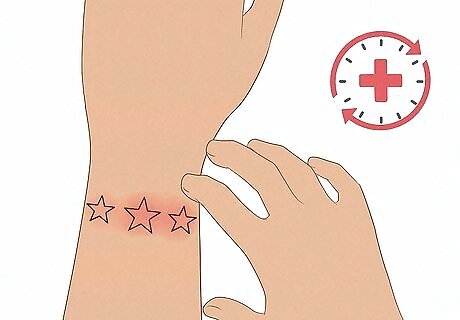
Scratching can extend the tattoo’s healing time. A new tattoo is essentially an open wound that your body heals from. As it heals, it’s natural for scabs to form over your tattoo to protect the vulnerable skin from infection. If you scratch your tattoo, you might remove the scabs, expose the sensitive skin, and disrupt the healing process by forcing your skin to scab over again. Scabbing is one of the biggest reasons why tattoos itch. Scabs are a sign that your immune system is responding to the wound, which can cause itching. Plus, scabs can dry out your skin. Scabs typically form after 3 days of getting your tattoo. The scabs naturally fall off after about 10 days, so do not pick at or scratch them. The size of your tattoo can affect how much you scab. Some tattoos might not form noticeable scabs, but it’s still important not to scratch to promote faster healing.
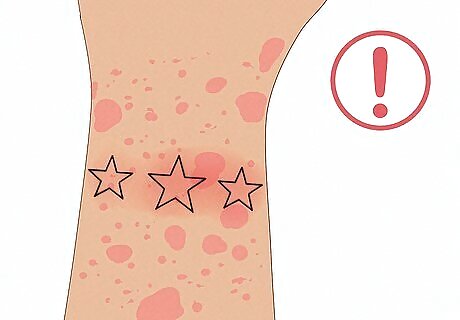
A scratch can lead to a potential infection. Bacteria and germs live on your fingernails even if they look spotless. When you scratch the sensitive, healing skin over your tattoo, these microorganisms can enter the wound and cause an infection. While some redness and inflammation are normal as your tattoo heals, you might have an infection if you develop a rash, bumps, hot skin, oozing pus, bleeding, pain, or fever. Visit your tattoo artist if you’re unsure if your tattoo is infected. They can help you diagnose the problem and recommend treatment products. Or, talk to your doctor to treat an infected tattoo. They might prescribe you antibiotics or steroid creams to reduce the infection. If your infection is mild, set a cold pack on top of a cloth and place it over the tattoo to reduce inflammation. Or, apply aloe vera to promote healing.
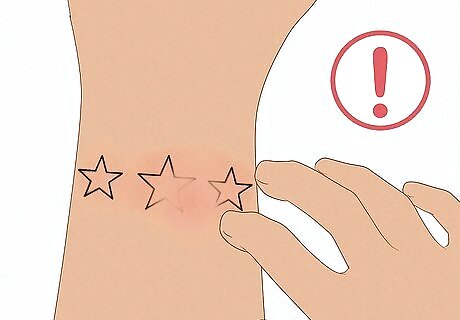
Scratches can damage or alter the tattoo design. As your tattoo heals, the ink sinks lower and lower into your skin. If you manage to scratch through a layer of skin with ink in it, you might pull out the ink. This can cause your tattoo to fade or for patches of ink to be missing in the design. Scratching and removing scabs as the skin is still healing can also lead to scarring or pitting which might distort the design. If you notice your tattoo fading after scratching it, don’t panic. Some fading is normal as your tattoo heals and a new layer of skin forms over it. If the scratches alter your tattoo or cause it to fade once it's fully healed, you might have to get a touch-up from your tattoo artist. This is an extra fee that hikes up the total cost of your tattoo.
Treating a Scratched Tattoo
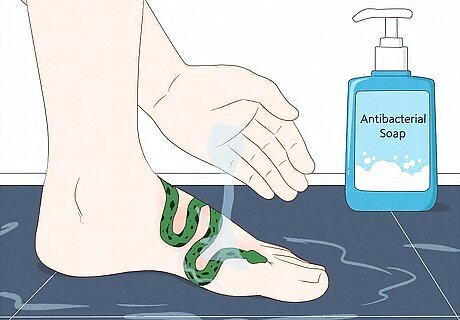
Clean your tattoo with soap and water. To reduce the chances of infection, wash your tattoo as soon as you notice you scratched it. Gently cleanse it with antibacterial soap and rinse it off by cupping and pouring water over it with your hands. Then, pat your tattoo dry with a clean towel. Make sure to wash your hands before cleaning your tattoo to reduce the risk of infection, too. If you're cleaning your tattoo in the shower, keep it out of direct streams of water to protect it from damage. Instead, scoop the water with your hands and pour it over your tattoo.
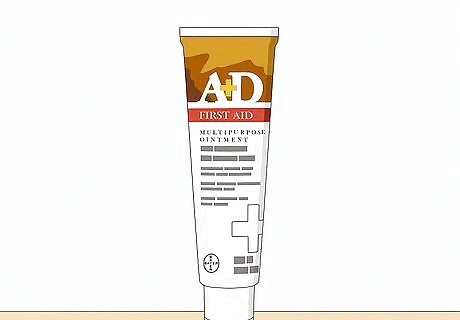
Apply a healing aftercare ointment on top of the tattoo. If your tattoo artist recommended a specific product to help speed up your recovery, use that ointment. Otherwise, reach for a first-aid cream like A+D First Aid Ointment or Aquaphor Healing Ointment that contains vitamins A and D or tea tree oil. Then, simply apply a thin layer over the scratch to fight any potential infection and boost the healing of the scratch and your tattoo.
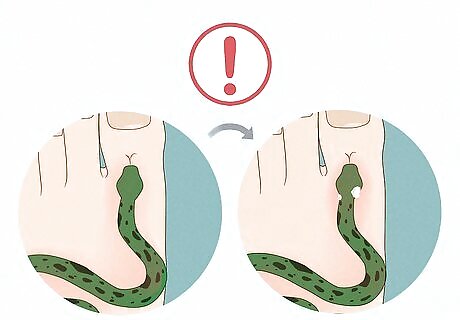
Monitor your tattoo for infection or inflammation. Continue to take care of your tattoo as normal while watching for signs of infection like increased redness, pain, rashes, and pus. Just keep washing your tattoo 2 to 3 times each day and apply a fragrance-free lotion on top. If the scratch scabs over and you don’t notice any abnormal symptoms, you are likely in the clear. If you do see signs that your tattoo is infected, visit your doctor to get antibiotics or prescription creams to treat the infection.
Dealing with an Itchy Tattoo

Apply a mild, fragrance-free lotion. As the skin around your tattoo heals, it tends to get dry and itchy. To stop your tattoo from itching, simply apply a thin layer of fragrance-free moisturizer on top. Just pat on the lotion instead of rubbing it in to prevent any scabs from falling off. Many tattoo artists recommend moisturizers like Lubriderm Daily Moisture, Cerave Moisturizing Cream, and Eucerin Advanced Repair Lotion. Stay away from petroleum-based lotions, like petroleum jelly, as these moisturizers can cause your tattoo to fade. While it’s tempting to slather your tattoo with lotion, using too much can trap moisture between your skin and scabs that causes bubbling and damage to your tattoo. Over-moisturizing can also cause your scabs to fall off prematurely, which opens up your tattoo to infection and damage.
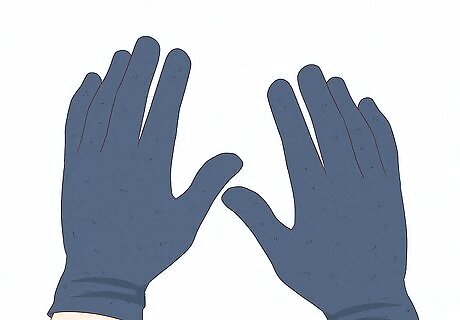
Wear gloves when you sleep to prevent scratching. If you’re waking up with scratches all over your tattoo, protect it while you sleep by putting on a pair of gloves or wrapping your hands in an old t-shirt. The extra layer of fabric acts as a barrier that prevents bacteria from entering your tattoo from your nails. Keep your fingernails short while your tattoo is healing to keep any scratches mild and reduce the risk of infection. Alternatively, cover your tattoo up in a light, breathable fabric while you sleep to prevent scratching. For example, wear a long-sleeved top or bottoms.
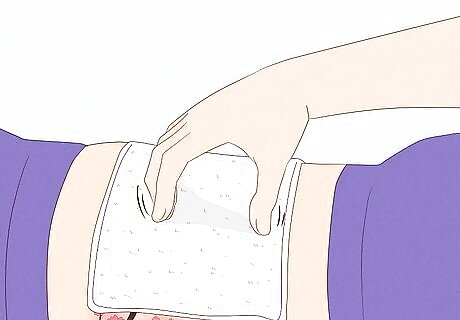
Pat the tattoo gently to relieve itchiness. While it’s best to avoid any kind of scratching, giving your tattoo a light patting can reduce discomfort with minimal risk to your healing. Just place a thick, clean cloth or piece of fabric over your tattoo and lightly drum your fingers over it. Do not rub the cloth, as this can remove scabs and open your tattoo up to infection.
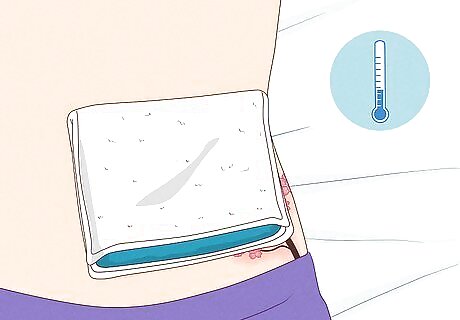
Cool your tattoo down with an ice pack. The chill of an ice pack helps reduce the burning, itchy sensation that tempts you to scratch your tattoo. To protect your tattoo from the cold, lay down a clean cloth or towel over it first. Then, place an ice pack on top for several minutes or until the itchiness subsides. As an alternative, set a cool, damp, and clean cloth over your tattoo for several minutes. Make sure the cloth isn’t soaking wet as excess moisture can damage your tattoo’s appearance.

Wash your tattoo 2 to 3 times each day to keep it clean. Regularly cleansing your tattoo with antibacterial soap prevents infection and speeds up the healing process, which means less time dealing with itchy skin. Just rinse your tattoo with soap and pat it dry about 2 to 3 times per day. Apply a thin layer of lotion after you wash your tattoo to lock in moisture and prevent it from drying out. Avoid soaking your tattoo in water while it heals. While showers are fine, taking a bath or swimming can pull out the ink and expose your tattoo to bacteria.
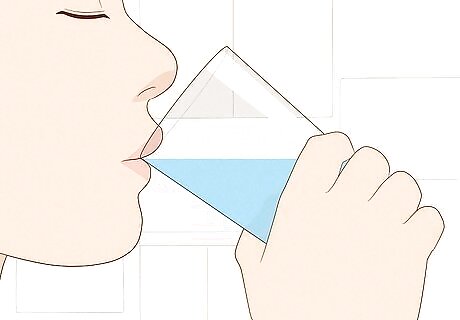
Stay hydrated. Drink enough water each day to help keep your skin hydrated and reduce dryness and itchiness. Then, eat fruits and vegetables high in water content like watermelon, spinach, strawberries, apples, and cucumbers to boost your hydration too. On average, men need about 15.5 cups (3.7 liters) of water a day to stay hydrated while women need about 11.5 cups (2.7 liters).
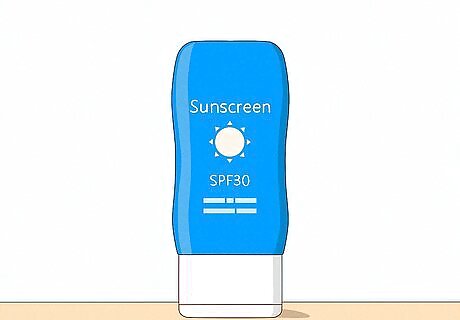
Wear sunscreen when going out in the sun. As your tattoo heals, direct sunlight can disrupt your recovery and cause your tattoo to fade. If you know you’re going to be in the sun, apply sunscreen with an SPF of 30 or higher about 15 minutes before you step outside. Cover your tattoo up as much as possible when heading outdoors, too. Even after your tattoo heals, keep applying sunscreen to help prevent fading.
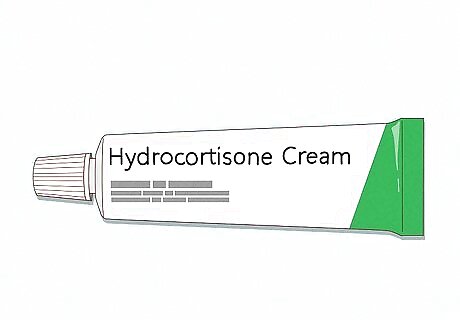
Put on hydrocortisone cream if the itching is severe. While hydrocortisone cream helps reduce uncomfortable itchiness and irritation, it’s not generally recommended for new tattoos. Only apply it if nothing else helps to relieve the itchiness, as anti-itch creams can disrupt your tattoo's natural healing process and cause the ink to fade. If your tattoo is fully healed and itchy, it’s safe to apply hydrocortisone cream. If you have an allergy to tattoo ink, you might develop an itchy, red rash. In this case, take an over-the-counter allergy medication to relieve your symptoms. Some underlying skin conditions, like eczema or psoriasis, can cause itchiness. Talk to your doctor about your symptoms to receive proper treatment.
When can you scratch a tattoo?
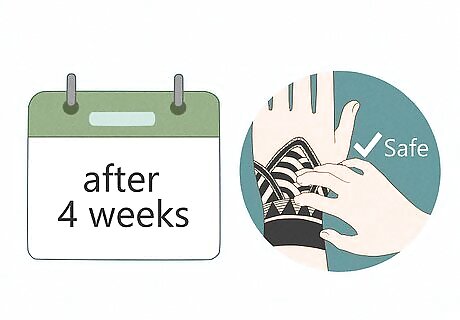
It’s safe to scratch your tattoo once it fully heals, or after 4 weeks. Allow your tattoo to scab, peel, and recover from damage before giving in to any itchiness. Depending on the size of your tattoo, its placement, how deep the ink was injected, and any underlying health conditions, the healing process might take 4 weeks to 6 months. Large tattoos and ones placed in high-use areas, like your elbows or knees, typically take longer to heal.




















Comments
0 comment